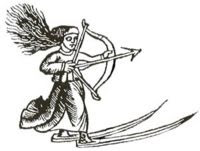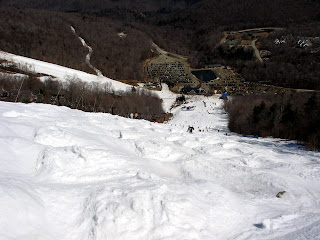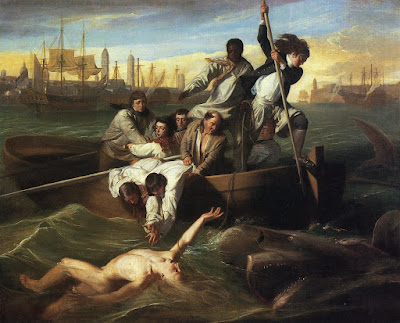Well, it has been a busy week at chez McCabe! I finished the Muse book and sent it off into the cold, cold world (aka the UK Harlequin office). I started an Intro to Samba class. Not yet ready for America’s Ballroom Challenge, but I do have a nifty new pair of t-strap dance shoes, and I’m going to samba roll those holiday pounds away! And I’m following Cara’s Shakespearean example and auditioning for a local production of A Midsummer Night’s Dream this afternoon. I’m a bit nervous. In high school and college I did some theater, but not much since. I do have some experience with Midsummer. Granted, I was seven years old and my one line was “Peas-blossom”. But I think it should count. We have to present a prepared monologue (I’m doing Titania’s “These are the forgeries of jealousy”) and read from the script. I would love to play Titania, but would be more than happy with “third fairy from the right.” Oh, and tomorrow night I’m having an Oscar party and still don’t know what food to serve. Wish me luck!
In between dancing and reciting Shakespeare (often at the same time), I’ve been reading essayist Adam Gopnick’s Through the Children’s Gate: A Home in New York, the follow-up to his very entertaining Paris to the Moon. Gopnick riffs on art, food, mortality, family, post-9/11 New York life–and imaginary friends. In the chapter “Bumping Into Mr. Ravioli,” he discusses his three-year-old daughter Olivia’s imaginary friend (hereafter IF), the fabulously named Charlie Ravioli, and how he reflects modern urban life. Ravioli does seem a very New York-ish kind of IF. He lives in an apartment at “Madison and Lexington,” and never has time to meet with Olivia. She leaves messages for him on her toy cell phone, until they happen to “bump into each other” and “hop into a taxi” to “grab a coffee.” Ravioli also has an assistant who tells Olivia he is very busy, and a wife named Kweeda, who sadly dies of that dreaded urban disease Bitterosity (also prone to strike writers, I hear). Olivia also announces to her father that “Ravioli read your book. He didn’t like it much.” Everyone is a critic.
A famous set of literary IFs belonged to the Brontes, of course. A different set-up from the Ravioli gig, the young Brontes had a whole invented universe with their lands of Angria, Gondal, and Gaaldine. What sort of IFs would, say, little Jane Austen have? Young Thomas Hardy? Wee George Eliot? Small Virginia Woolfe (I might be scared of that one!)?
My own IFs were sadly mundane. A man named Bill, his wife Lila, their daughter Eve, and a Scottie dog named Mr. Scott. Their main purpose was to accompany me to the grocery store when I went there with my mother, so I could say “Bill and Lila think we should get Lucky Charms instead of whole wheat bran flakes.” Never worked. And they never did anything so dashing as hop into taxis, either. I think they worked in a library or something.
Anyway, the whole idea of IFs just seemed to tie into what I’ve been doing lately, writing and theater. With every book I feel like I create a whole new crew of Bills and Lilas (though hopefully more interesting!), who seem so real to me as we imagine new adventures together. I don’t usually argue with them in the cereal aisle, but they have been responsible for more than one missed highway exit. I sometimes tend to get caught up in plotting while driving, so if you see a red Toyota with a short brunette at the wheel coming at you, get out of the way!
What kind of IF did you have, or do your children have now? Did your imaginary worlds as a child make you more of a reader/writer? Any ideas on those IFs of famous people? Or suggestions for my Oscar party???
Happy weekend! Hope we can hop into a taxi and grab a coffee soon, even if only in our imagination.









